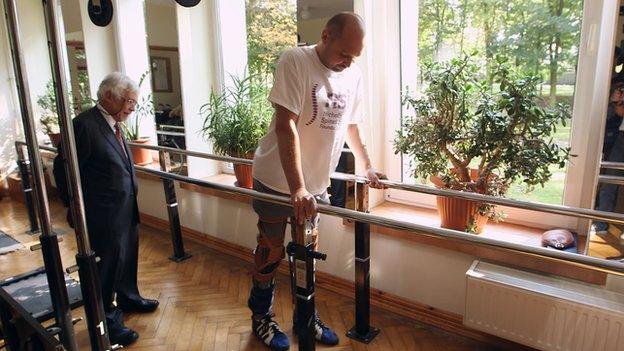'Brain wi-fi' reverses leg paralysis in primate first
- Published
- comments
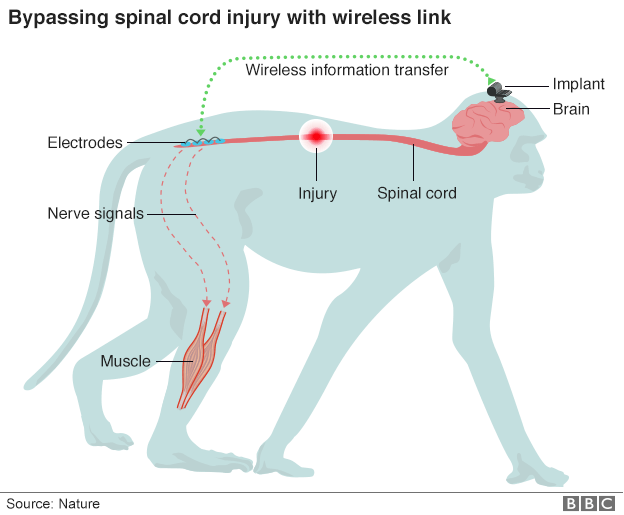
An implant that beams instructions out of the brain has been used to restore movement in paralysed primates for the first time, say scientists.
Rhesus monkeys were paralysed in one leg due to a damaged spinal cord.
The team from the Swiss Federal Institute of Technology bypassed the injury by sending the instructions straight from the brain to the nerves controlling leg movement.
Experts said the technology could be ready for human trials within a decade.
Dr Andrew Jackson talks about the primate brain chip
Spinal cord injuries block the flow of electrical signals from the brain to the rest of the body resulting in paralysis.
It is a wound that rarely heals, but one potential solution is to use technology to bypass the injury.
In the study, a chip was implanted into the part of the monkeys' brain that controls movement.
Its job was to read the spikes of electrical activity that are the instructions for moving the legs and send them to a nearby computer.
It deciphered the messages and sent instructions to an implant in the monkey's spine to electrically stimulate the appropriate nerves.
The process all takes place in real time.
The results, published in the journal Nature, external, showed the monkeys regained some control of their paralysed leg within six days and could walk in a straight line on a treadmill.
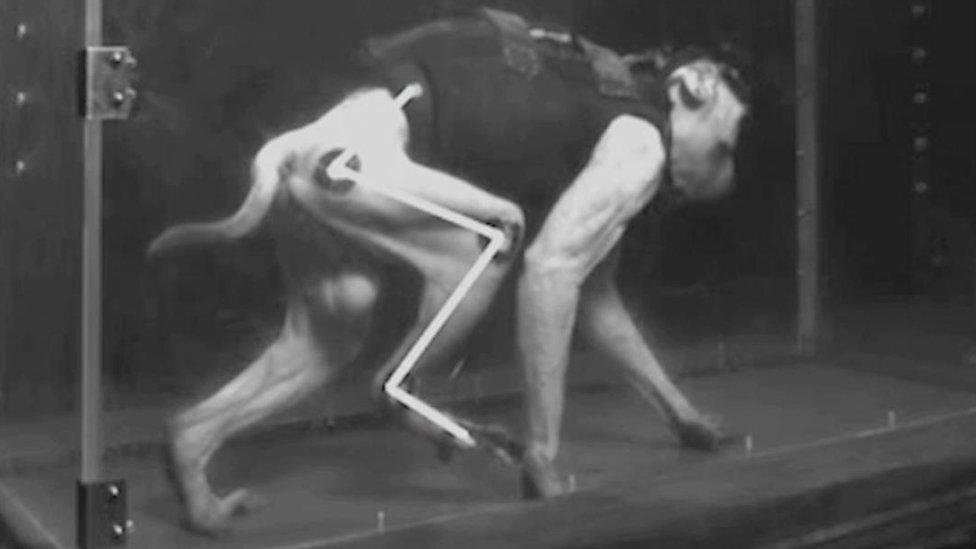
Dr Gregoire Courtine, one of the researchers, said: "This is the first time that a neurotechnology has restored locomotion in primates."
He told the BBC News website: "The movement was close to normal for the basic walking pattern, but so far we have not been able to test the ability to steer."
The technology used to stimulate the spinal cord is the same as that used in deep brain stimulation to treat Parkinson's disease, so it would not be a technological leap to doing the same tests in patients.
"But the way we walk is different to primates, we are bipedal and this requires more sophisticated ways to stimulate the muscle," said Dr Courtine.
Jocelyne Bloch, a neurosurgeon from the Lausanne University Hospital, said: "The link between decoding of the brain and the stimulation of the spinal cord is completely new.
"For the first time, I can image a completely paralysed patient being able to move their legs through this brain-spine interface."
Using technology to overcome paralysis is a rapidly developing field:
Brainwaves have been used to control a robotic arm
Electrical stimulation of the spinal cord has helped four paralysed people stand again
An implant has helped a paralysed man play a guitar-based computer game
Dr Mark Bacon, the director of research at the charity Spinal Research, said: "This is quite impressive work.
"Paralysed patients want to be able to regain real control, that is voluntary control of lost functions, like walking, and the use of implantable devices may be one way of achieving this.
"The current work is a clear demonstration that there is progress being made in the right direction."
Dr Andrew Jackson, from the Institute of Neuroscience and Newcastle University, said: "It is not unreasonable to speculate that we could see the first clinical demonstrations of interfaces between the brain and spinal cord by the end of the decade."
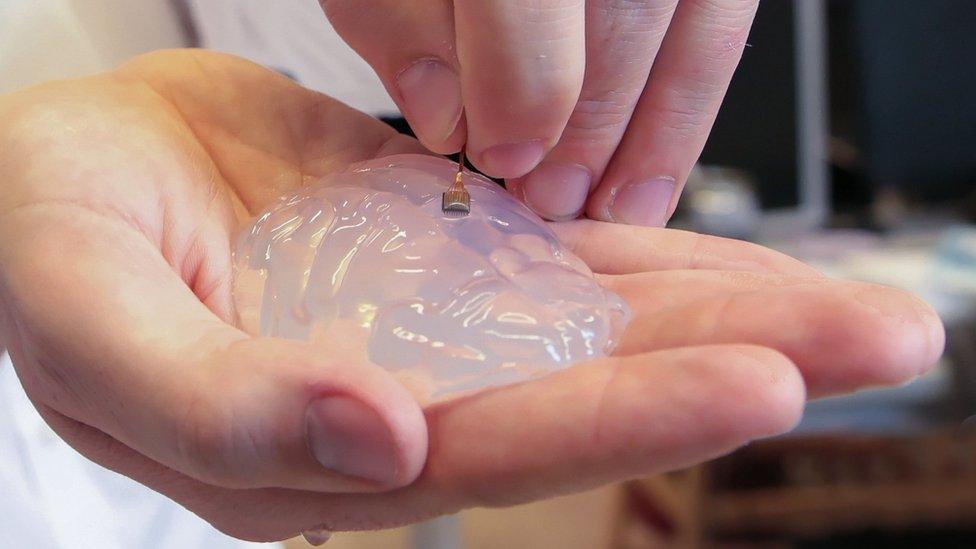
The brain chip with a lab model of a monkey brain
However, he said, rhesus monkeys used all four limbs to move and only one leg had been paralysed, so it would be a greater challenge to restore the movement of both legs in people.
"Useful locomotion also requires control of balance, steering and obstacle avoidance, which were not addressed," he added.
The other approach to treating paralysis involves transplanting cells from the nasal cavity into the spinal cord to try to biologically repair the injury.
Following this treatment, Darek Fidyka, who was paralysed from the chest down in a knife attack in 2010, can now walk using a frame.
Neither approach is ready for routine use.
Follow James on Twitter., external
- Published20 May 2011
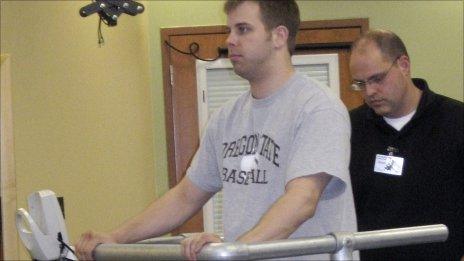
- Published13 April 2016
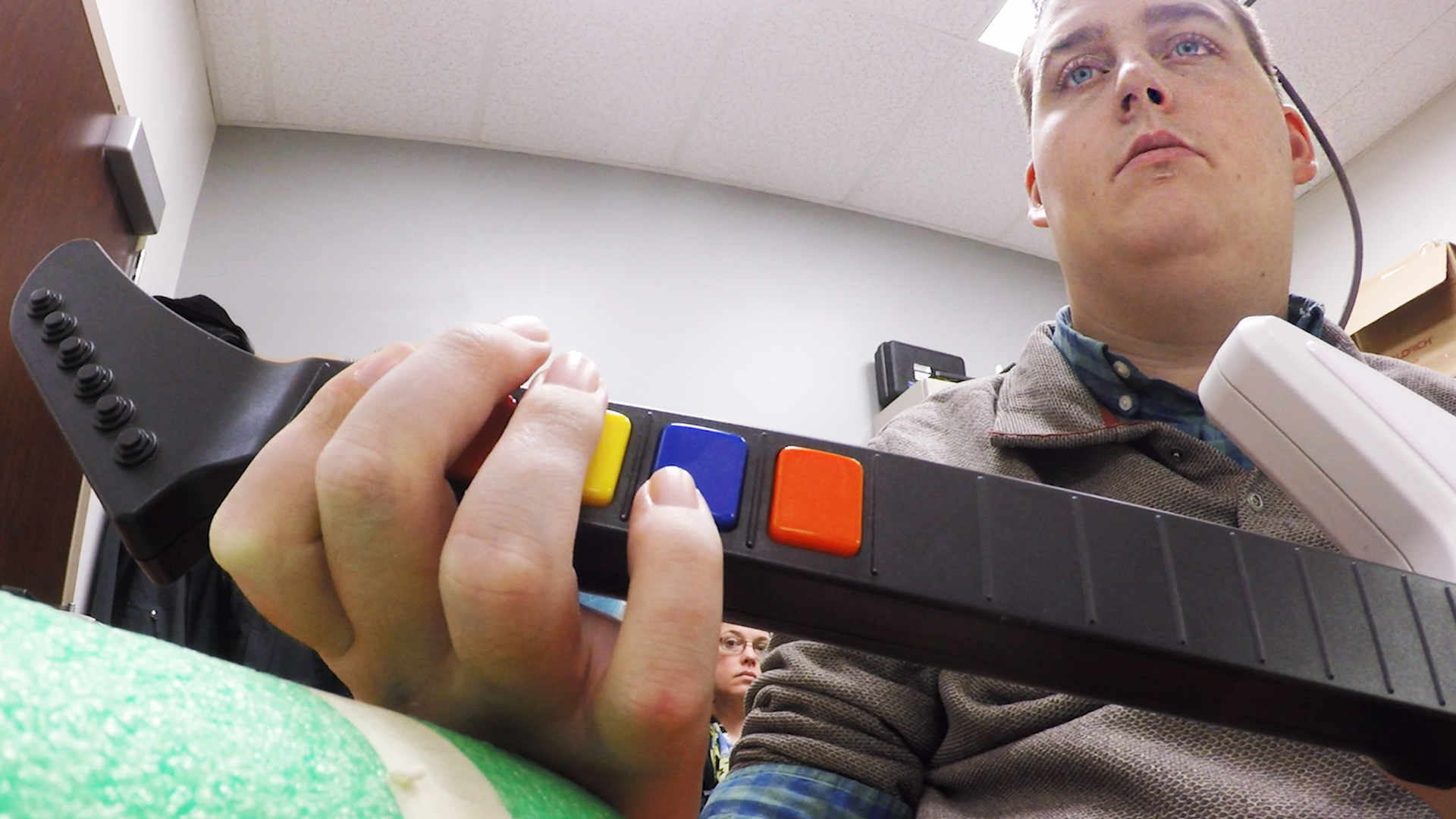
- Published9 January 2015
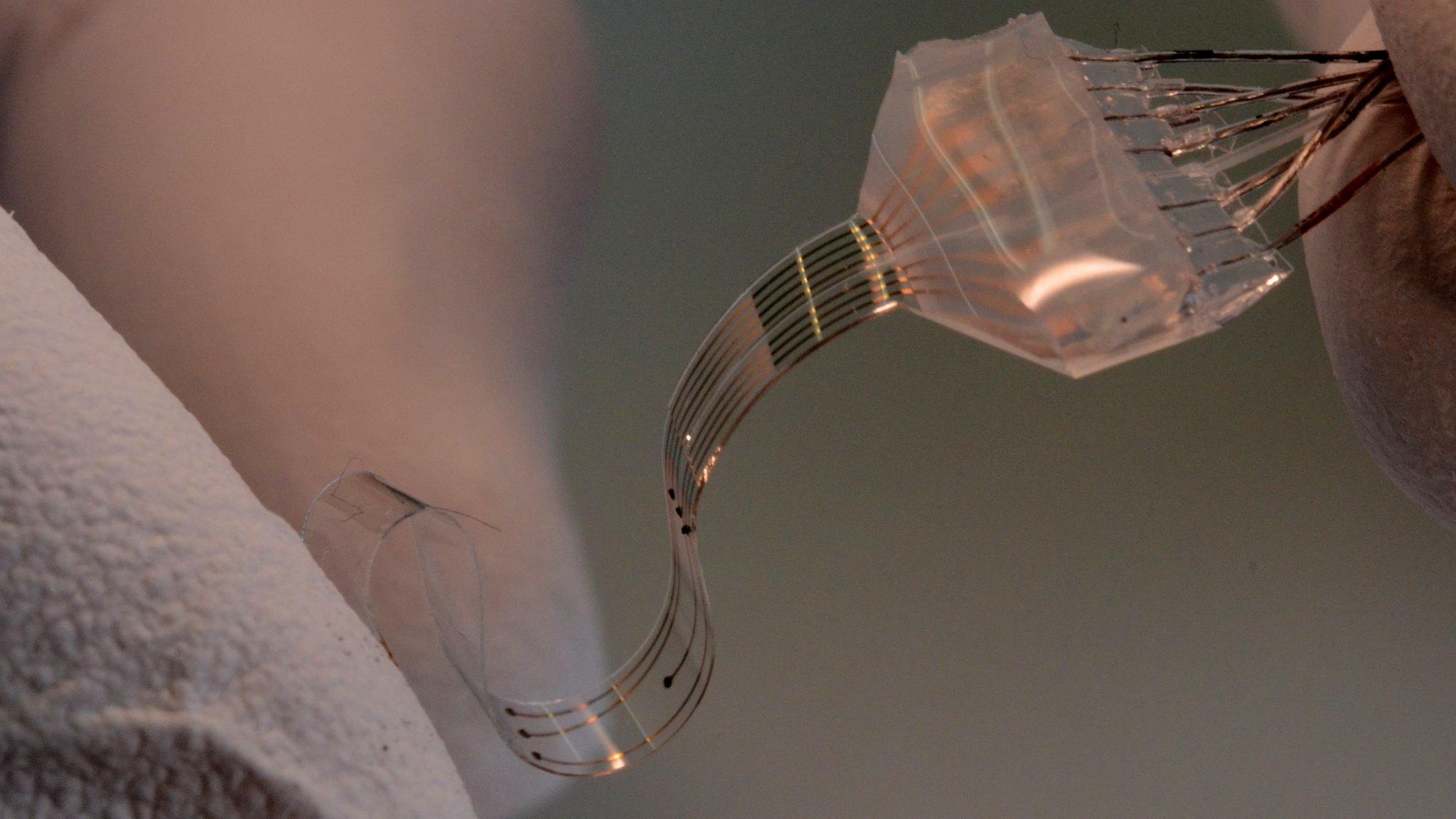
- Published21 October 2014
